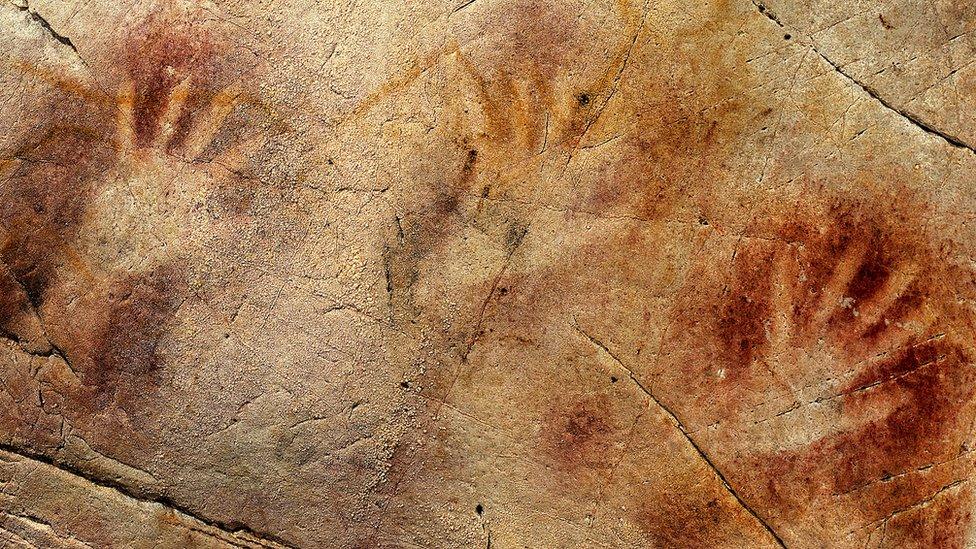Ice Age engravings found at Jersey archaeological site
- Published
Different lighting highlights different elements of the engravings
A dig in Jersey has yielded a stash of hunter-gatherer artefacts from the end of the last Ice Age, including stone pieces criss-crossed by carved lines.
They are similar to engravings found from the same period in continental Europe, but are the first of their kind in the British Isles.
Archaeologists are in the early stages of analysing the finds, but estimate them to be at least 14,000 years old.
This places the camp among the earliest in northern Europe after the freeze.
It would also mean that the markings pre-date the earliest known art, external in the UK, which was found carved into stone walls and bones at Creswell Crags in Derbyshire in 2003.
However, the team wants to study the engravings more closely and hopefully find more of them, before making any grand claims.
Dr Chantal Conneller is co-director of the Ice Age Island, external project, which for five years has been working on the Les Varines site in the south east area of Jersey. She told the BBC: "We're feeling reasonably confident at the moment that what we've got fits into this broader idea of non-representational Magdalenian art."
The Magdalenians were one of several hunter-gatherer cultures which gradually re-colonised Europe as the ice retreated, 16,000 to 13,000 years ago.

Archaeologists have been working at the Les Varines site for five summers
Stone fragments like these, apparently from smashed-up larger tablets covered in repeated lines, are known from Magdalenian camps in France and Germany.
"We're hoping this is a hint of what is to come, because at some other sites you get hundreds of these pieces. What we've got at the moment is only a fragment of something much larger," said Dr Conneller, a senior lecturer at the University of Manchester.
Her colleague Dr Silvia Bello, from London's Natural History Museum, is currently analysing the fragments using different microscopic techniques.
She cautioned that the work is still preliminary, but said: "We can already say the stones are not natural to the site, they show clear incised lines consistent with being made by stone tools, and they do not have any obvious functional role."

So far the team has unearthed three engraved fragments - and they hope to find more
Ruling out more mundane explanations, such as the rocks being used as cutting boards, was a complicated process. Dr Conneller explained: "The microscopic study... shows that there is organisation to the design, with two groups of lines, one set straight and made with a fine tool, and another more curved and often broader.
"This suggests to us something beyond a functional explanation."
Flat, engraved stones found at other Magdalenian sites sometimes contain representations, such as horses or other figures, and often appear to have been reused.
The team can see the imprint of several different stone tools in the Jersey fragments, which suggests - along with other clues - that they have a similarly complex history. "It certainly seems to be something that's re-engraved over time," Dr Conneller said.
As for the precise timing of the camp, the archaeologists hope to get a firm idea by dating pieces of bone that were also among this summer's haul from the dig.
In the meantime, they can look at the cultural similarity between this camp and other, well-studied Magdalenian sites in Europe.
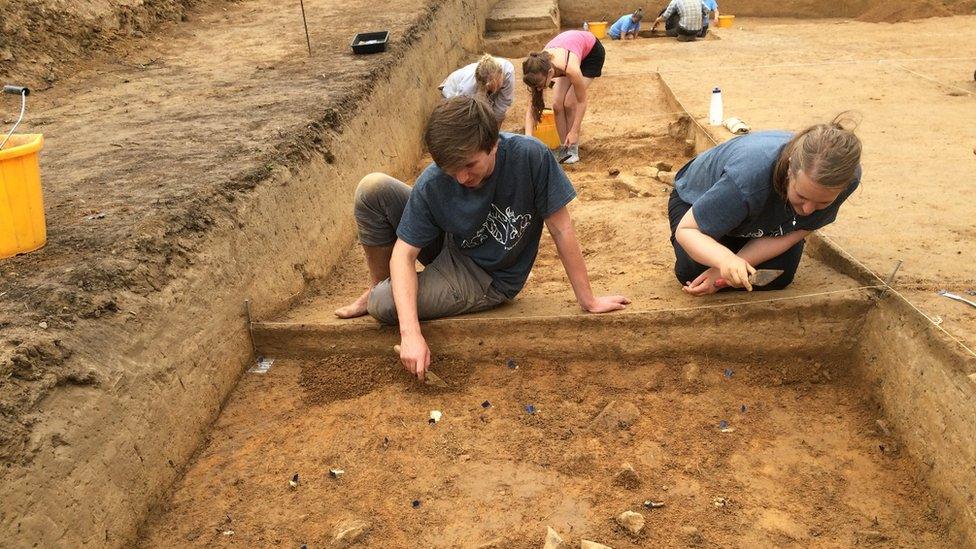
"Five years of patient work" at the dig has already produced more than 5,000 stone artefacts
"I feel reasonably confident it dates to sometime between 15,000 and 14,500 years ago. That's based on some very good sites, with quite good typology, in northern France. And what we have would certainly fit into that 500 years," Dr Conneller said.
"It might well represent some of the first hunter-gather communities to re-colonise the north of Europe after the coldest period of the last Ice Age."
Treasure trove
This summer's discoveries are the high point, thus far, of a long-running project.
"This has been the culmination of five years of patient work, tracing thousands of flint tools within slope deposits back to the mother lode," said Dr Ed Blinkhorn, from the UCL Institute of Archaeology.
"We knew a significant hunter-gatherer camp lay in this field and it seems we've finally found it."

Some of the carved lines are curved, while most are straight
Dr Conneller agrees. "What's really exciting about this year is we seem to have found part of the site pretty much intact. We're beginning to get hearths, bits of bones - and these exciting engraved stones as well," she said.
The discovery of the camp is particularly important, she added, because so little of this ancient landscape remains accessible.
"The sea level would have been much lower at the time. To the north of Alderney would be a massive channel river, with a really wide valley - this seems to be a big barrier to human movement.
"But we don't really know anything that was going on in this drowned landscape."
The team's research, which has been supported for the past three years by the Jersey Tourism Development Fund and the Capco Trust, is now on display at the Jersey Museum.
The exhibition will run throughout 2016 and includes one of the engraved stones.
Follow Jonathan on Twitter, external
- Published26 June 2015
.jpg)
- Published6 November 2014
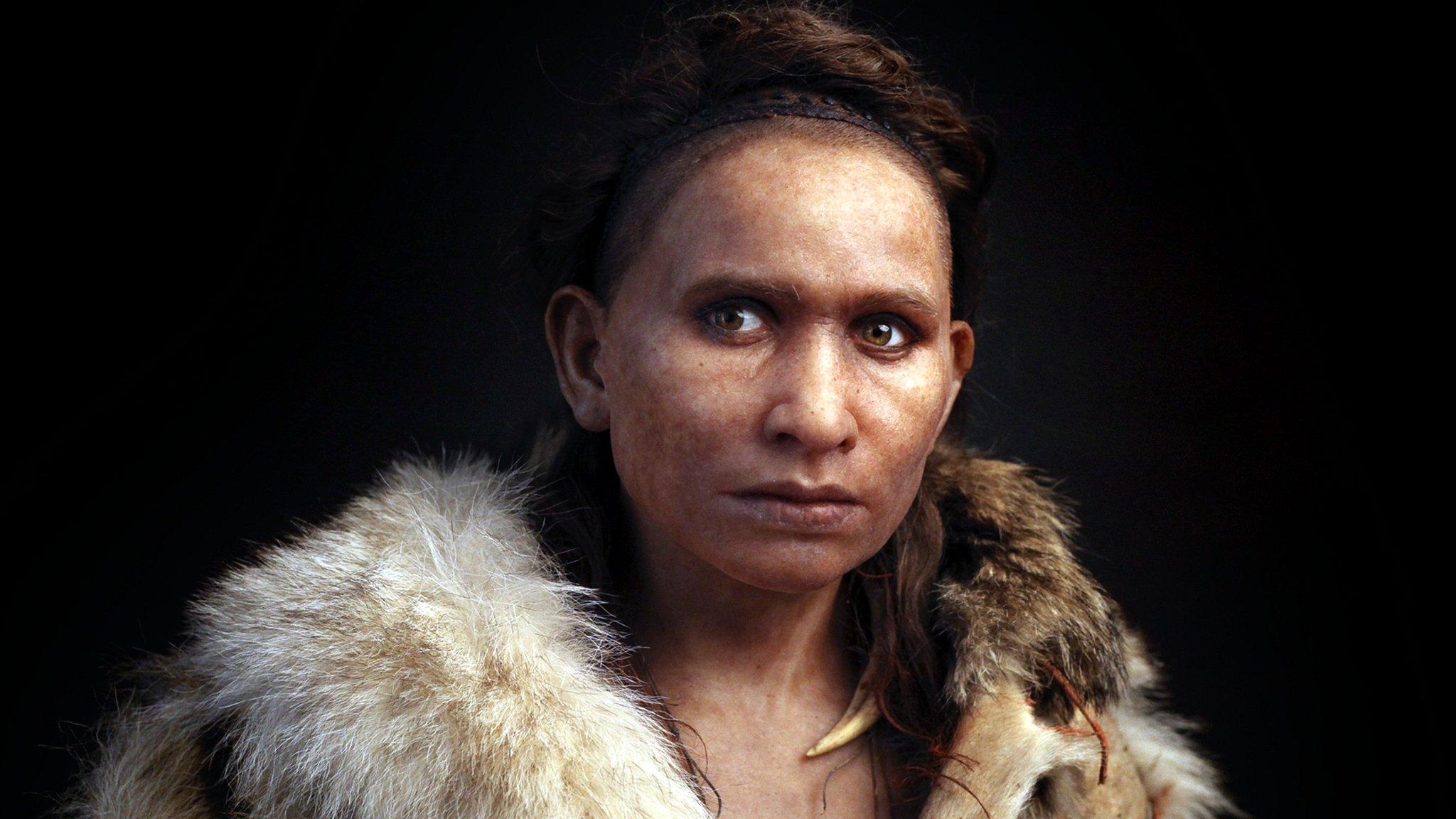
- Published1 September 2014
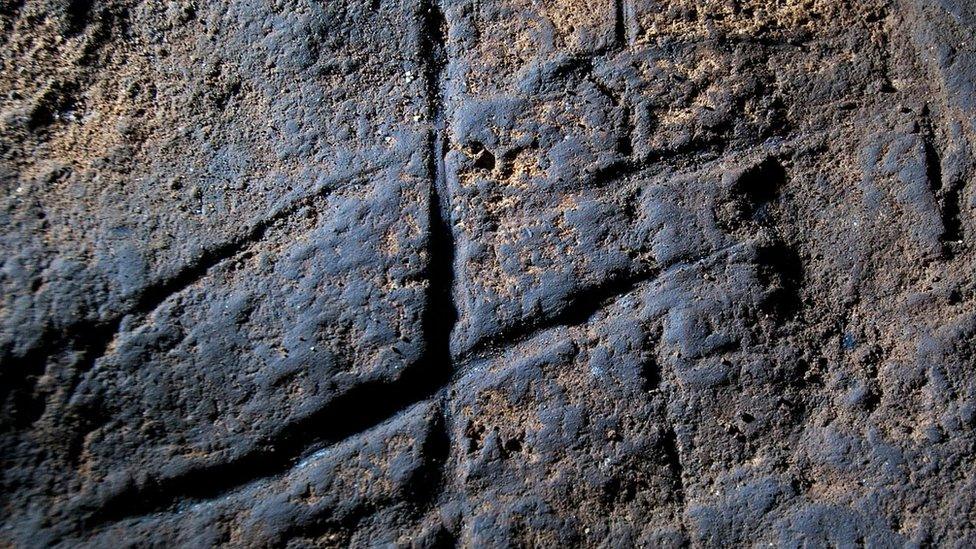
- Published28 March 2014

- Published29 June 2012
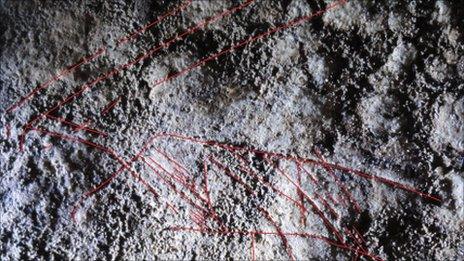
- Published15 June 2012
